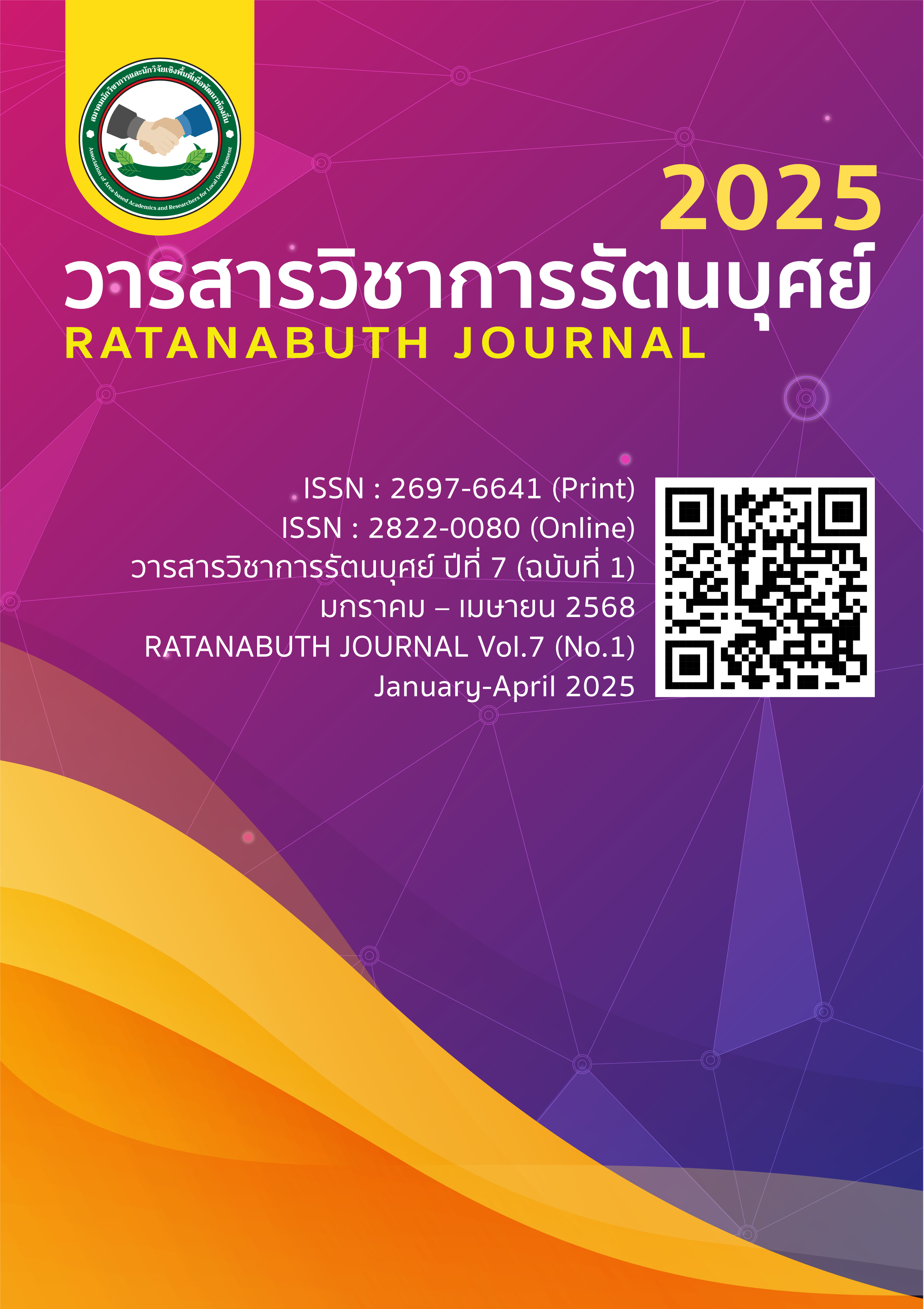Development of Community Well-being Action Mechanisms: Lessons from the Provincial Management Unit Development Project in Sisaket Province Development of Community Well-being Action Mechanisms: Lessons from the Provincial Management Unit Development Project in Sisaket Province
Main Article Content
Abstract
Community health management is an integrated health care approach addressing physical, spiritual, political, economic, and social dimensions. It involves multiple sectors and requires systematic management. This lesson learned synthesis aimed to: 1) extract key knowledge and lessons from the implementation of Si Sa Ket Province Management Mechanism Development Project in terms of road safety management and reduction of alcohol consumption; 2) analyze success factors and limitations of using management mechanisms in driving community well-being work; and 3) develop effective policy recommendations and models for driving community well-being work. The study employed a mixed-methods approach, using document review, in-depth interviews, focus group discussions, participant observations, and analysis of quantitative data from provincial health databases. The research framework applied the Social Ecological Model and Network Governance concepts to analyze driving mechanisms.
The results showed that: 1) Key knowledge and lessons learned revealed that effective community health management requires mechanisms that integrate cooperation between various sectors through the use of evidence-based data, team capacity development, and community participation building; 2) Success factors included team capacity, comprehensive community participation, integration of working mechanisms appropriate to local contexts, and support from external agencies, while limitations included mechanism sustainability, inter-agency coordination, and deep-rooted attitudes in local culture; 3) Effective policy recommendations and models for driving community well-being work included the road safety management model using the Road Safety Directing Center mechanism and the alcohol consumption reduction model using the District Health Assembly mechanism, which can be applied in similar contexts.
Article Details

This work is licensed under a Creative Commons Attribution-NonCommercial-NoDerivatives 4.0 International License.
References
กระทรวงสาธารณสุข. (2564). ระบบสารสนเทศการแพทย์ฉุกเฉิน (Information Technology for Emergency Medical System: ITEMS). นนทบุรี: กระทรวงสาธารณสุข.
จันทร์ โต๊ะสิงห์, ชญานิน กฤติยะโชติ, อนุพันธ์ สุวรรณพันธ์, & จุฑามาศ แก้วจันดี. (2567). รายงานการถอดบทเรียนโครงการพัฒนากลไกหน่วยจัดการจังหวัดศรีสะเกษ. กรุงเทพมหานคร: สำนักสร้างสรรค์โอกาสและนวัตกรรม สำนักงานกองทุนสนับสนุนการสร้างเสริมสุขภาพ.
วิชัย โชควิวัฒน์, ศิริวรรณ พิทยรังสฤษฏ์, & อรพรรณ ศรีสุขวัฒนา. (2562). การทบทวนสถานการณ์การดำเนินงานด้านสุขภาวะชุมชนของประเทศไทย. วารสารวิจัยระบบสาธารณสุข, 13(1), 31–45.
สำนักงานป้องกันและบรรเทาสาธารณภัยจังหวัดศรีสะเกษ. (2567). รายงานข้อมูลอุบัติเหตุทางถนนจังหวัดศรีสะเกษ ปีงบประมาณ 2564-2566. ศรีสะเกษ: สำนักงานป้องกันและบรรเทาสาธารณภัยจังหวัดศรีสะเกษ.
สำนักงานสถิติแห่งชาติ. (2565). การสำรวจพฤติกรรมการสูบบุหรี่และการดื่มสุราของประชากร พ.ศ. 2564. กรุงเทพมหานคร: สำนักงานสถิติแห่งชาติ.
สำนักงานสาธารณสุขจังหวัดศรีสะเกษ. (2566). ข้อมูลพฤติกรรมการบริโภคเครื่องดื่มแอลกอฮอล์ ปี 2561-2565. ศรีสะเกษ: สำนักงานสาธารณสุขจังหวัดศรีสะเกษ.
สถาบันวิจัยเพื่อการพัฒนาประเทศไทย. (2563). รายงานฉบับสมบูรณ์ โครงการศึกษาต้นทุนผลกระทบทางสังคม สุขภาพ และเศรษฐกิจของการบริโภคเครื่องดื่มแอลกอฮอล์. กรุงเทพมหานคร: สำนักงานกองทุนสนับสนุนการสร้างเสริมสุขภาพ.
Green, L. W., & Kreuter, M. W. (2005). Health program planning: An educational and ecological approach (4th ed.). New York: McGraw-Hill.
Haddon, W. (1980). Advances in the epidemiology of injuries as a basis for public policy. Public Health Reports, 95(5), 411–421.
Nutbeam, D., Harris, E., & Wise, M. (2010). Theory in a nutshell: A practical guide to health promotion theories (3rd ed.). Sydney: McGraw-Hill.
Rhodes, R. A. W. (2007). Understanding governance: Ten years on. Organization Studies, 28(8), 1243–1264.
Room, R. (2013). Sociocultural aspects of alcohol consumption. In P. Boyle, P. Boffetta, A. B. Lowenfels, H. Burns, O. Brawley, & W. Zatonski (Eds.), Alcohol: Science, policy, and public health (pp. 38–45). Oxford: Oxford University Press.
World Health Organization. (2010). Global strategy to reduce the harmful use of alcohol. Geneva: World Health Organization.
World Health Organization. (2022). Global status report on road safety 2022: Improving road safety for all road users. Geneva: World Health Organization.

